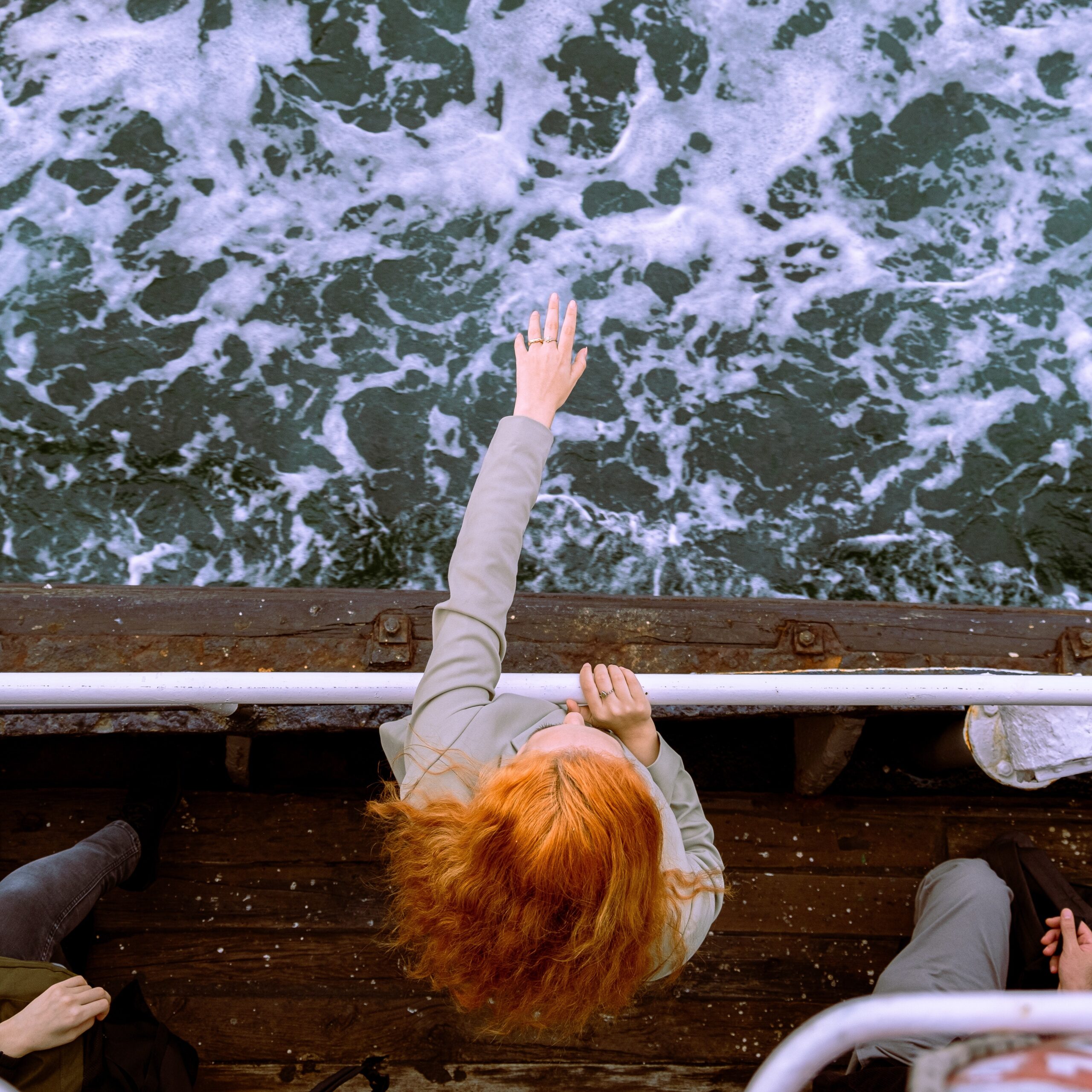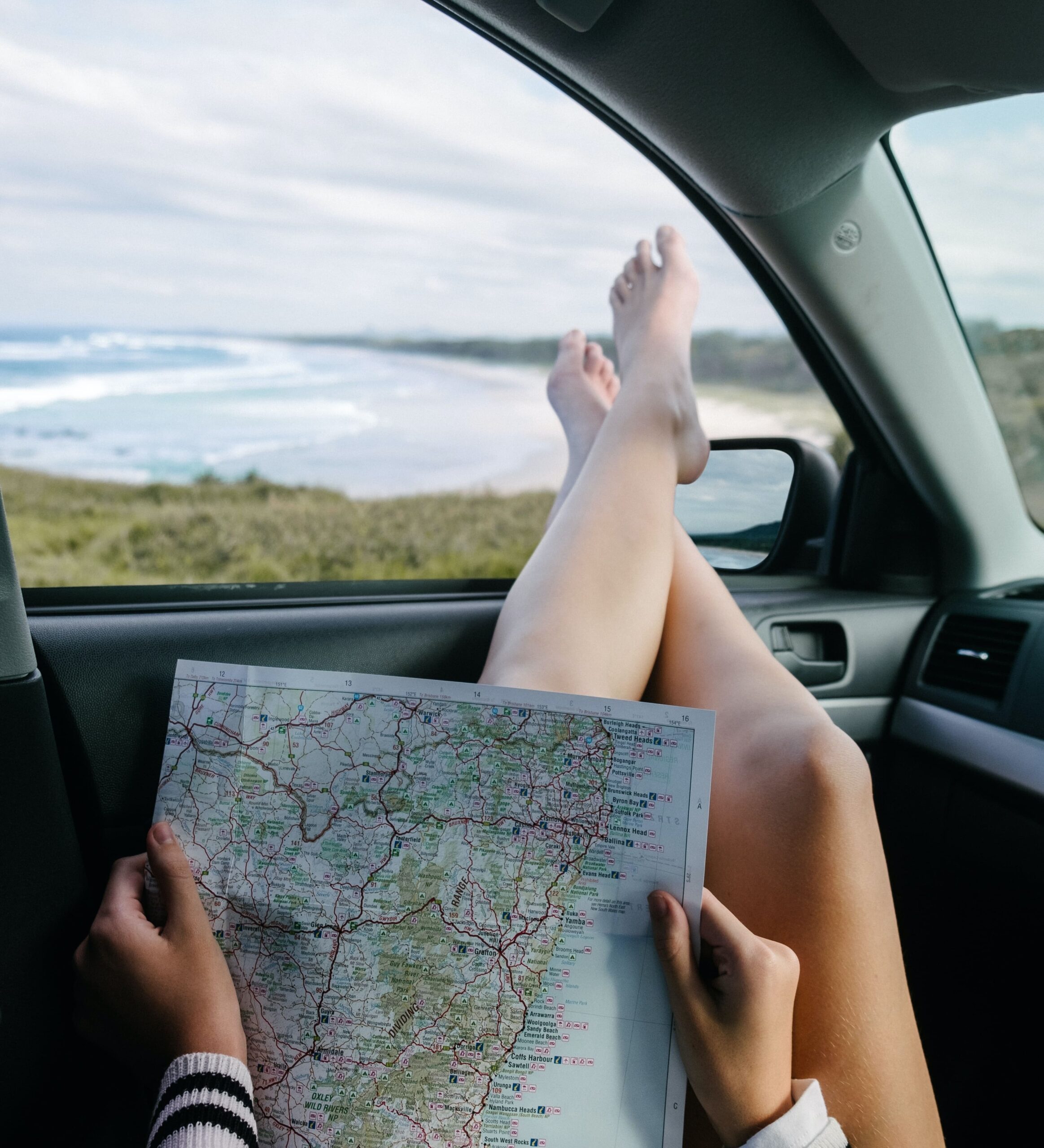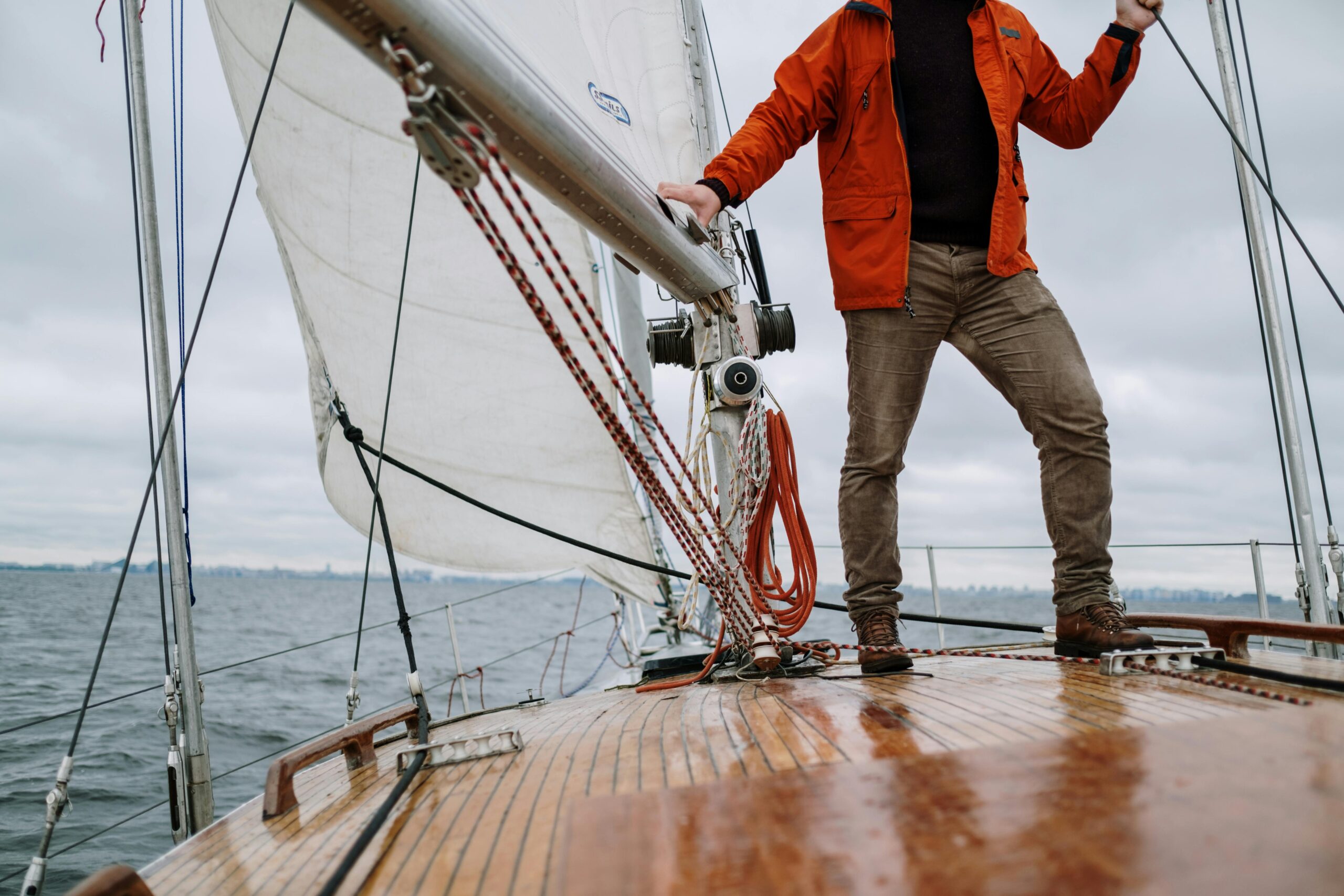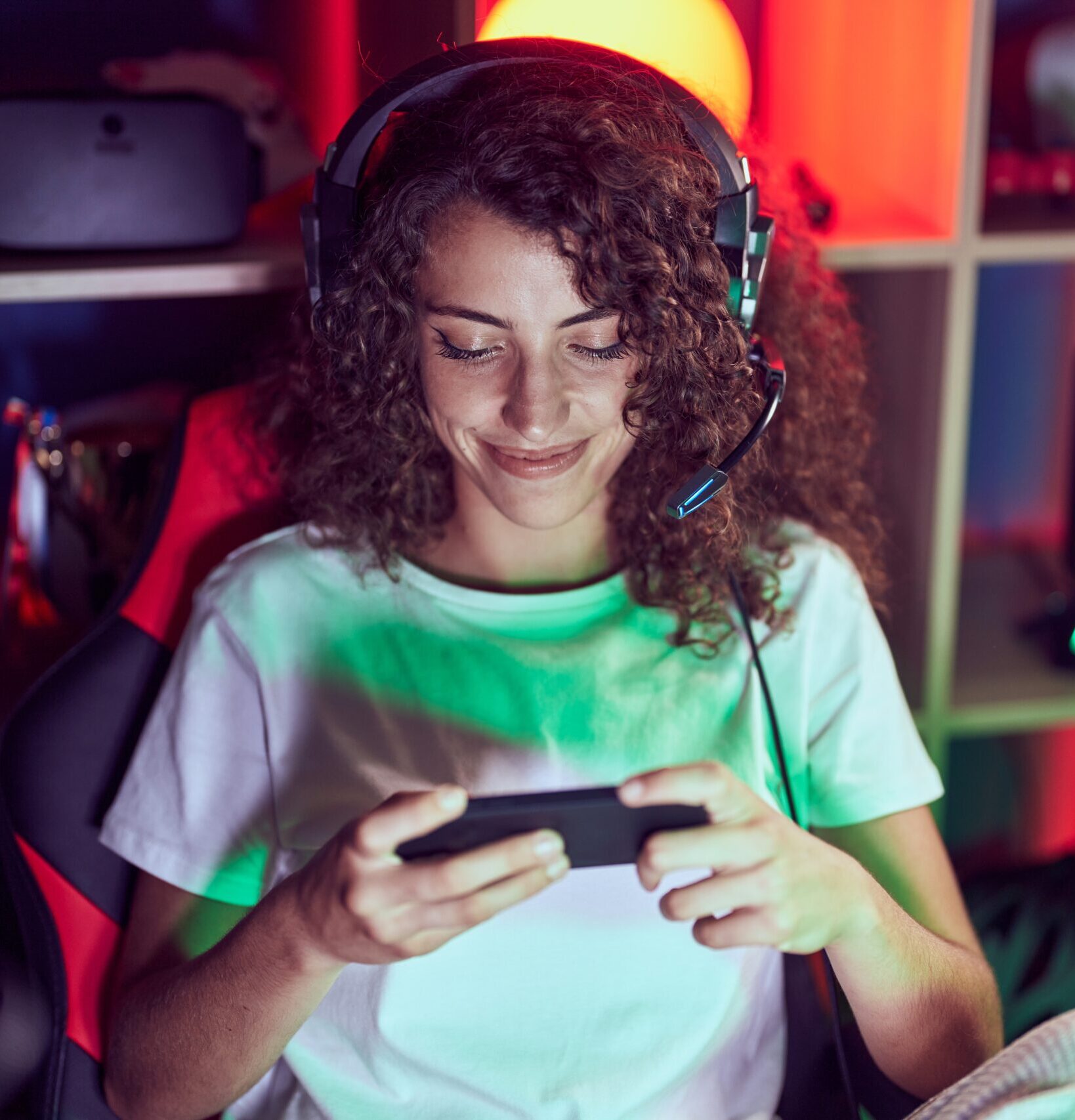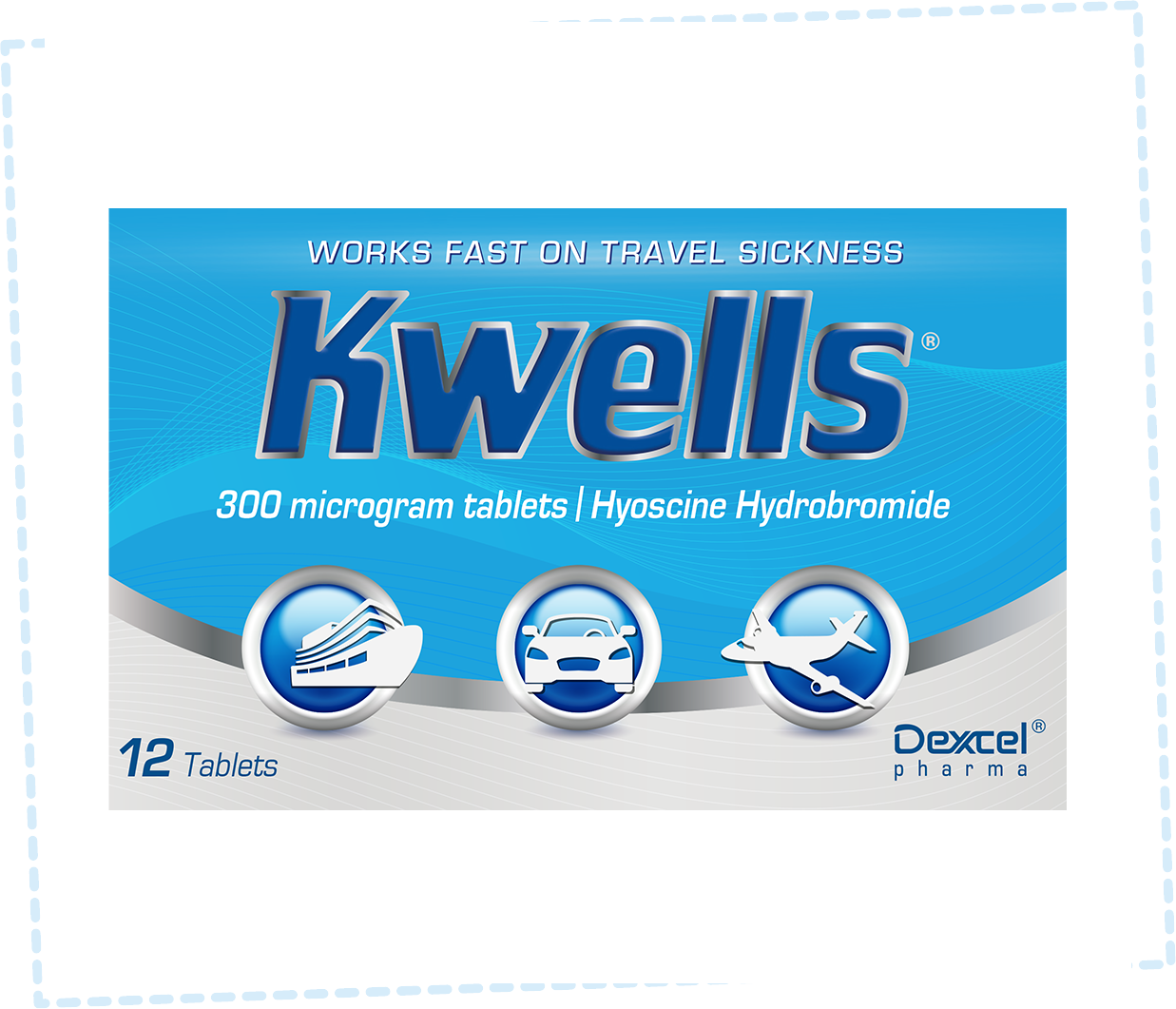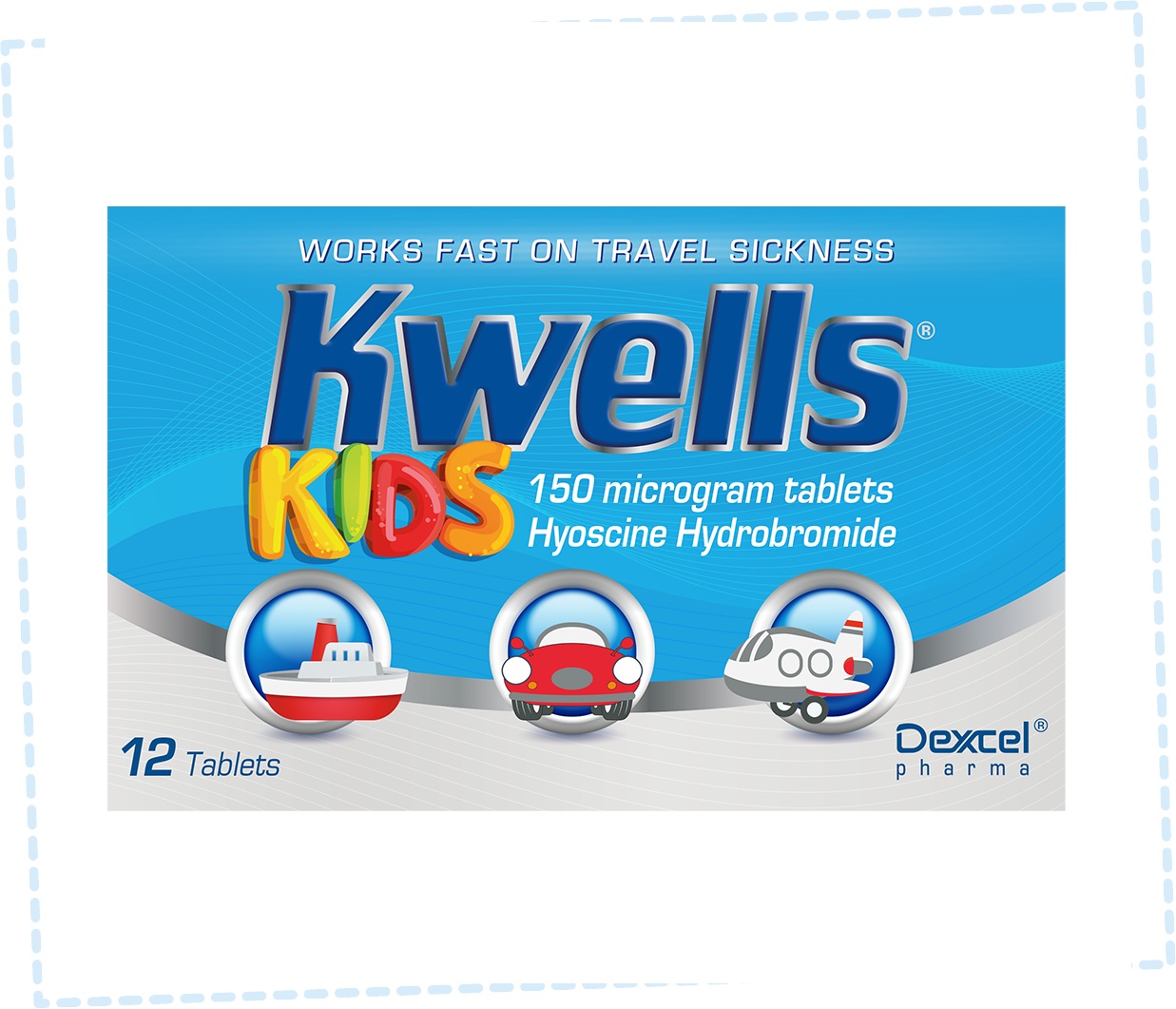How to stop sea sickness – tips for cruises, boats and watercraft adventures
There’s nothing quite like the thrill of being out on the water – whether you’re cruising along a far-flung coastline, setting sail for a day trip adventure, or heading out on a fishing expedition.
But for quite a few of us the excitement can quickly turn into discomfort thanks to one common culprit – sea sickness.
The good news is it doesn’t have to ruin your water bound adventures.
In this blog we’ll explore practical tips and proven strategies to help prevent and manage sea sickness so you can enjoy every wave, breeze and horizon.
From cruise ships to kayaks, we’re here to provide all the insights into seasickness to help you prepare for smoother sailing.
What causes sea sickness?
Sea sickness is a type of motion sickness caused by a sensory response to repeated movements when travelling.
It’s triggered when the brain receives mixed messages from the eyes sensing you’re stationery and while the inner ear – the body’s balance mechanism – is sensing movement.
This mismatch between what your eyes see and what your inner ear feels sends conflicting signals to the brain which leading to symptoms like dizziness, nausea, and even vomiting.
For example, your body might sense movement from the swaying of a boat, but your eyes, especially if you’re below deck or staring at a screen, see a still interior.
Certain triggers can heighten the symptoms of sea sickness such as:
Choppy or rough water
Strong smells, such as fuel, food, or perfume
Reading or focusing on screens
Do you get sea sick on a cruise?
Is sea sickness is only an issue on small boats? Not always. While it’s true that modern cruise ships are designed for stability and often have stabilisers to reduce motion, it’s still possible to feel unwell, particularly if you’re susceptible to motion.
Even on large vessels, certain conditions can trigger sea sickness such as rough seas, high winds or stormy weather so if you’re prone to seasickness be prepared or opt for a destination that offers relatively calmer waters.
Keeping motion onboard to a minimum is key so head for the deck or the middle of the ship and avoid strong smells, steering clear of areas near the engine for example.
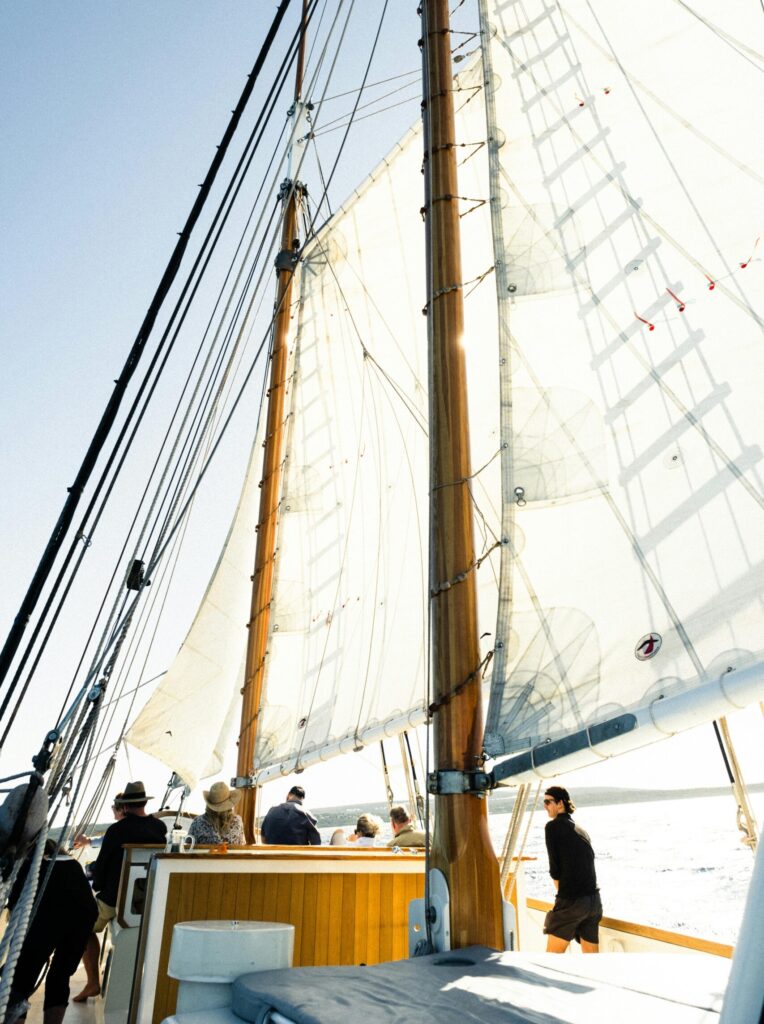
Practical tips for preventing sea sickness
Anyone who’s ever experienced sea sickness will know how unpleasant it can be.
But some simple, practical steps will hopefully help you to be better prepared and feel more confident and in control when heading out on that dream cruise or water-based adventure.
Here are some tried-and-tested tips to help prevent sea sickness:
- Choose the most stable spot: Sit in the middle of the boat or ship, where there’s less movement. If possible, stay on deck where you can get fresh air and keep your eyes on the horizon.
- Look at the horizon: Focusing on a stable, distant point can help your brain make sense of the motion and reduce the sensory conflict that causes nausea.
- Avoid reading or screen time: Looking at phones, books, or tablets can make symptoms worse because your eyes are focused on something that doesn’t match the motion your body feels. Try to stay visually connected to your surroundings.
- Stay hydrated and eat light: Drink plenty of water and avoid large, heavy meals before and during your journey. Light, bland snacks like crackers can help settle your stomach, but avoid greasy or spicy foods.
How do sea sickness pills work?
If self-help methods aren’t working and you need advice on seasickness medication speak to your pharmacist.
There are several types of travel sickness medicines available over the counter that can help prevent or relieve the symptoms of motion sickness.
Medications like hyoscine hydrobromide work by disrupting the conflicting signals between the inner ear and the brain.
The most common active ingredients include hyoscine hydrobromide and cinnarizine.
Hyoscine Hydrobromide
Hyoscine hydrobromide is the active ingredient in Kwells travel sickness tablets.
It’s believed to work by interfering with the signals between the inner ear and the brain that trigger nausea and vomiting.
By interfering with these messages, hyoscine helps to reduce the impact of motion on the balance organs of the inner ear, thereby easing feelings of nausea.
It acts quickly and is recommended to be taken 20 to 30 minutes before travel, or at the first sign of sickness, for fast and effective relief.
Cinnarizine
Cinnarizine is a sedating antihistamine that is also commonly used to treat dizziness and nausea.
It works by blocking the effects of histamine – a substance released by the body in response to motion or allergies.
Cinnarizine may take up to four hours after taking a dose to feel the full benefits and is often recommended for longer journeys.
Kwells Travel Sickness Tablets
Kwells and Kwells Kids are used for the fast and effective prevention and control of travel sickness.
Hyoscine hydrobromide temporarily reduces the effect of movement on the balance organs of the inner ear and the nerves responsible for nausea.
Because Kwells tablets melt in the mouth, absorption into the bloodstream is very rapid and they can be taken up to 20–30 minutes before travelling or at the onset of sickness.
*Kwells 300 microgram tablets. For the prevention of travel sickness, suitable for adults and children aged 10+. Contains Hyoscine Hydrobromide 300 microgram. Kwells Kids 150 microgram tablets. For the prevention of travel sickness, suitable for children aged 4+. Contains Hyoscine Hydrobromide 150 microgram. Always read the label.
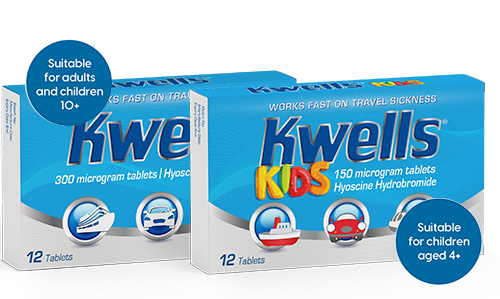
Travel Happy Tips
Kwells 300 microgram tablets. For the prevention of travel sickness, suitable for adults and children aged 10+. Contains Hyoscine Hydrobromide 300 microgram. Kwells Kids 150 microgram tablets. For the prevention of travel sickness, suitable for children aged 4+. Contains Hyoscine Hydrobromide 150 microgram. Always read the label

